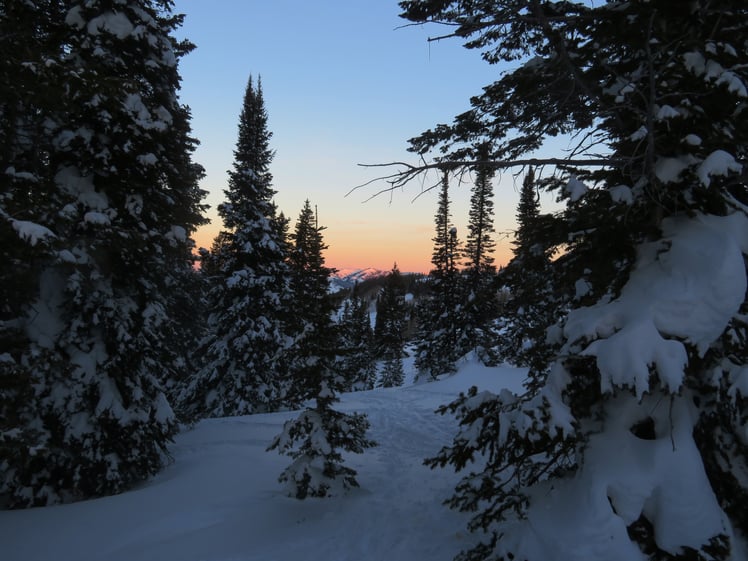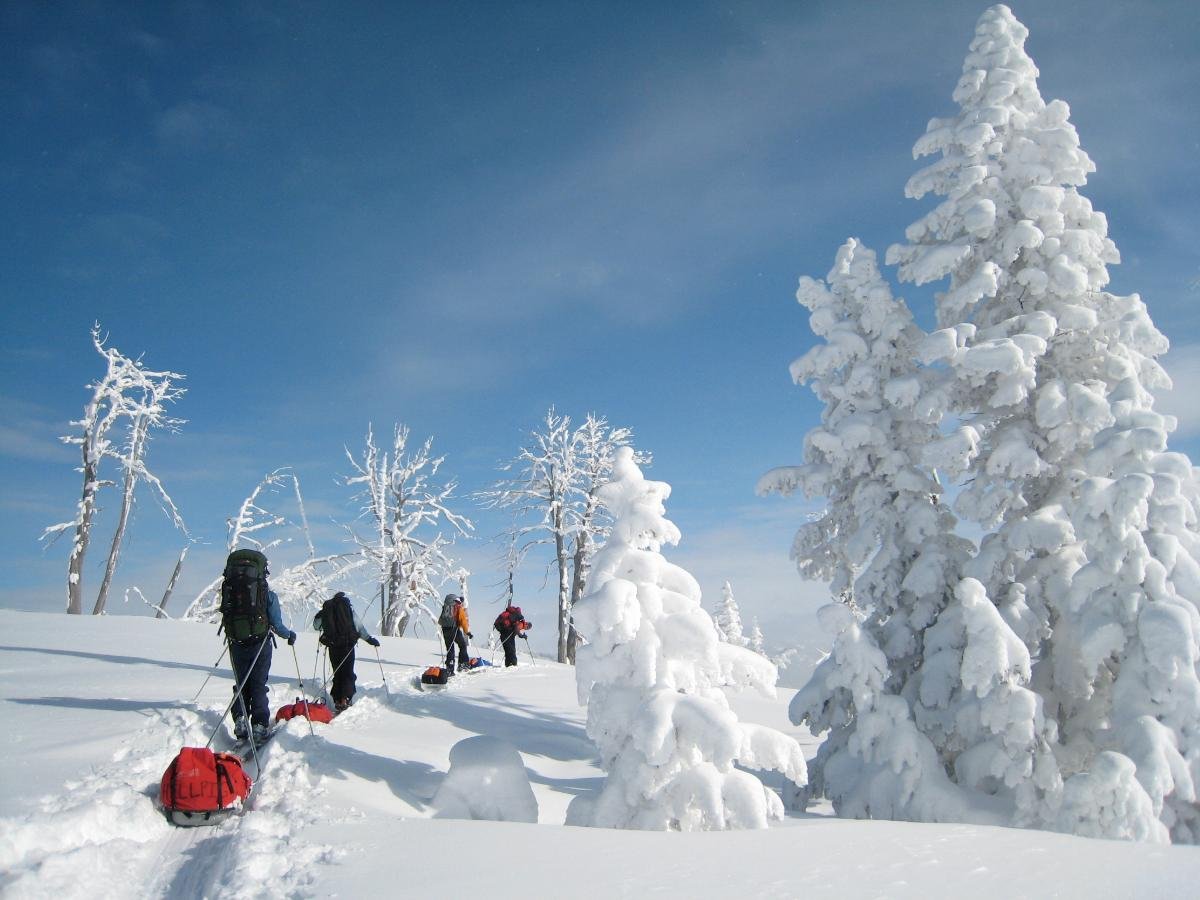
The Setting
You are searching, as part of your local SAR team, for an overdue snowmobiler. You know that the overdue person is a 62-year-old male with a history of risk factors for heart disease, but no actual heart attacks. He is described as an experienced snowmobiler and knowledgeable of the local trails. He planned a short ride this morning, due home by noon.
His wife says he is never late or will use his cell phone to inform her if his plans changed. She has heard nothing today. The weather service has posted a winter storm warming, which influences your team’s decision to search early for this person. One of you is pulling a small utility sled with a tarp, sleeping bag, and first aid and survival kit.
The weather is awful. Visibility is less than 60' (20 meters) in blowing snow. Travel is slow as you struggle to stay on the trails. After a couple of hours of searching, your teammate notices a snow machine off the side of the trail.
Scene Size-Up
There is one patient. The machine and his snowsuit match the description for your overdue person. The front of the machine has some damage that suggest he struck a tree. It’s 10℉(-12℃) with blowing snow. You are able to protect yourself in this weather.
Initial Assessment
Your initial assessment (you briefly lift his fogged facemask) finds the patient responsive to a loud shout (responsive to verbal stimulus). His eyes open and he seems to look around but does not say anything. You assume implied consent to treat. You find a carotid pulse and the skin on his chest seems cool to the touch. He is breathing. You do a quick “chunk check” squeezing all four extremities, the pelvis and the chest. There is no bleeding, you don’t find any obvious injuries, the helmet is intact.
STOP READING!
What is your assessment and plan? Take a few minutes to figure out your own assessment and make a plan. Don’t cheat—no reading on without answering this first!

Scene Size-Up & Initial Assessment (Continued)
You decide that the scene is unsafe. You cannot fully assess and care for the patient under these conditions. You remove the patient’s helmet and replace it with a knit cap. You place a soft cervical collar on the patient’s neck and being as gentle as possible you wrap the patient in the tarp, then slide him into the sleeping bag and cover it with a second tarp and slide the package onto your utility sled. One of you sits at the patient’s head to maintain contact and protect the spine. The other drives the machine to the trailhead. You are able to inform dispatch of your plan and request EMS to the trail head.
SOAP Report
Subjective
The patient is a 62-year-old male who struck a tree (unwitnessed) in a snow machine. There was moderate damage to the front of the machine. The patient was found lying supine in the snow; it is unknown when the accident occurred. On-scene weather precluded a full patient assessment. The patient was packaged in a hypo wrap with soft cervical collar and manual spine protection and transported for 45 minutes by snowmachine to the trailhead and transferred to EMS.
Objective
Patient Exam: Assessment by the EMS unit finds no signs of injury to the patient, the helmet is intact. Hands and feet were initially cold to the touch, but soft and pliable, and are now pink and warm and without sign of local cold injury and with good CSM. Patient is actively shivering. Patient denies chest pain.
Vital Signs
|
Time |
1600 |
|
|
Level of Responsiveness (LOR) |
Reported on scene as “V”. Currently A + O x 3. Has no memory of striking the tree or being on the snowmachine earlier in the day, is aware of present surroundings. |
|
|
Heart Rate (HR) |
|
|
|
Respiratory Rate (RR) |
14, regular, easy |
|
|
Skin Color, Temperature, Moisture (SCTM) |
pale, cold, dry |
|
|
Blood Pressure (BP) |
148/90 |
|
|
Pupils |
PERRL (Pupils equal, round, responsive to light) |
|
|
TemperatureT° |
|
History
|
Symptoms: |
|
|
|
Allergies: |
|
|
|
Medications: |
|
|
|
Pertinent Hx: |
|
|
|
Last in/out: |
|
|
|
Events: |
|
Assessment
Mild hypothermia (based on shivering, mental status, and measured temperature). Mechanism for spine injury, unable to perform focused spine assessment. Possible head injury.
Plan
EMS has removed the patient’s clothing, wrapped the patient in blankets, and has patient in a warm ambulance. Spine precautions are in place: soft collar, patient supine on cot. EMS is evaluating and treating the patient
Comments
On wilderness medicine courses we often practice the hypothermia wrap in controlled conditions where a patient in dry clothing is placed into a sleeping bag, then wrapped in a vapor barrier. This plan does not fit this scenario, which is based on a real event. The scene is “unsafe,” not suitable for assessment and treatment. Wrapping the patient first in the tarp preserves the dryness of the sleeping bag and its insulation ability. Transport conditions are not ideal, but realistic.
Once a safe scene is found, in this case the back of the ambulance, assessment and treatment can proceed.
We also use the phrase “spine protection” in this scenario. This is new terminology reflecting rapidly evolving modern spine injury management concepts where backboards, straps, and tape immobilization and cervical collars are not necessary for all patients. In this case immobilization would have been impractical and regardless, the SAR responder providing hands-on protection of the cervical spine was within standards of care.
The End of a Tale
The patient had mild hypothermia that resolved in an hour with warm blankets and a warm ambulance and emergency room. The patient had a concussion, there was no spine injury.
To learn more about treating hypothermia, check out this series of educational video modules for SAR members created by Gordon Giesbrecht, PhD.
Keep your skills fresh: Recertify with NOLS Wilderness Medicine.
Written By
Tod Schimelpfenig
As a NOLS Instructor since 1973 and a WEMT, volunteer EMT on ambulance and search and rescue squads since the 70s, Tod Schimelpfenig has extensive experience with wilderness risk management. He has used this valuable experience to conduct safety reviews as well as serve as the NOLS Risk Management Director for eight years, the NOLS Rocky Mountain Director for six years, and three years on the board of directors of the Wilderness Medical Society, where he received the WMS Warren Bowman Award for lifetime contribution to the field of wilderness medicine. Tod is the founder of the Wilderness Risk Manager’s Committee, has spoken at numerous conferences on pre-hospital and wilderness medicine, including the Australian National Conference on Risk Management in Outdoor Recreation, and has taught wilderness medicine around the world. He has written numerous articles on educational program, risk management and wilderness medicine topics, and currently reviews articles for the Journal of Wilderness and Environmental Medicine. Additionally, he is the author of NOLS Wilderness Medicine and co-author of Risk Management for Outdoor Leaders, as well as multiple articles regarding wilderness medicine. Tod is the retired curriculum director for NOLS Wilderness Medicine and is an active wilderness medicine instructor



